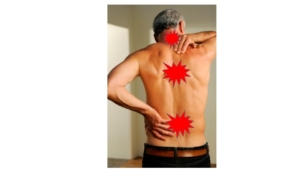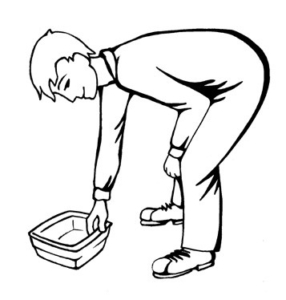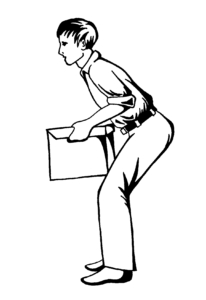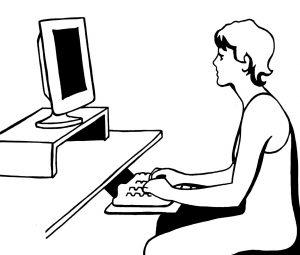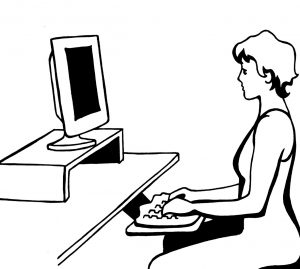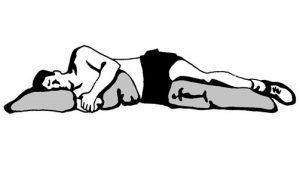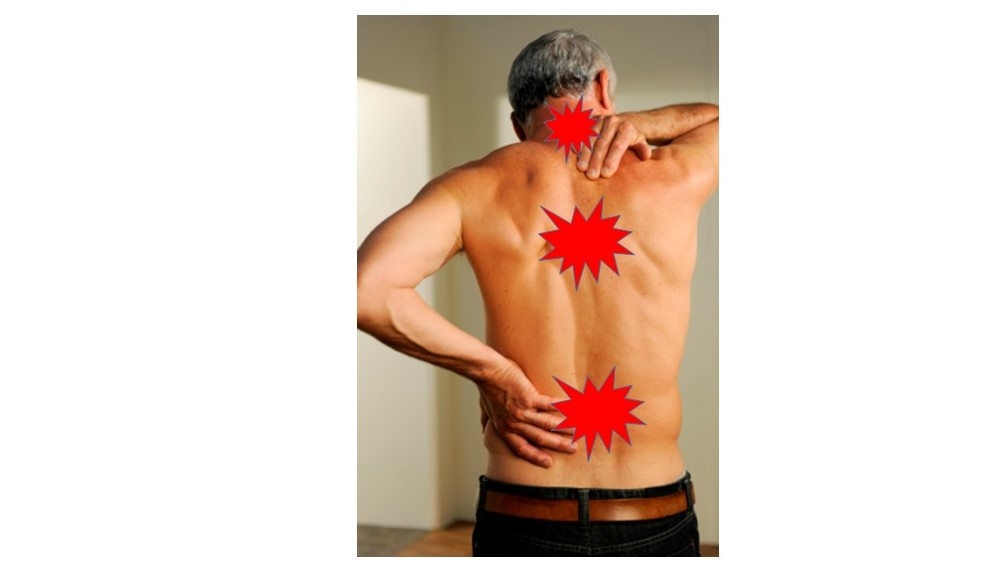
- Apr 13, 2017 |
- Ergonomics Blog, Posture, Repetitive Strain Injury, Sit to Stand Options
Causes of Back Pain – Part 1
Are you among the millions of people in North America who would say they have a “bad back”? One that is uncomfortable frequently and painful possibly a few times per year? The statistics show that 80-90% of us will have a sore back at some time(s) in our lives to the point where we consider it an issue. (Ref: The Complete Doctor’s Healthy Back Bible)
So, what are the causes of back pain?
Some of us may have congenital issues, like scoliosis or osteoarthritis. Others of us have had accidents and sports injuries that have brought on chronic issues. But for the rest of us, the main reason is we are sedentary, possibly overweight, and develop poor back posture over time. We sit to eat, work (many of us), and relax. Working out a few times a week helps as long as the exercises target the right muscles in the right way.
Muscle tightness comes from weak muscles that can’t keep up with the demands placed on them. Just because you work out doesn’t mean you will be strong. Cardio activities such as running or using an elliptical machine might tighten leg and hip muscles and create imbalances between “front of the body” and “back of the body” muscles. Sitting for long periods creates tightness in hip flexors and hip muscles that then strain the lower back. Improper bending and lifting, standing for long periods, and walking on hard surfaces (such as concrete floors) can all contribute to back problems.
Here are some tips to help your back:
Bending or Lifting:
When bending forward or lifting something, keep knees bent. Never lift with straight legs and try to bend at the hips, rather than the waist. Imagine a rod in your back that doesn’t allow you to roll forward. Chest up, eyes forward.
Hard on the Back Easier on the back
Sitting:
When sitting, try to maintain good posture most of the time (see the pictures below for slouched and good postures). This means that your tailbone is set right back in the seat so that you get good support from the backrest. A good lumbar support will help reduce lower back and hip strain and keep your pelvis rolled forward. Think about what your shoulders are doing – they should be pulled back and down (into your “back pockets”) with your chest open. Head should be back over your spine, chin tucked in (not up or down). This requires the chest and front neck muscles to be stretched enough and the back muscles to be strong. Tighten your lower abdominal muscles against the backrest. Practice this posture and over time and this will become more normal.
Slouched Posture Good “strong” Posture
Standing:
When standing for long periods, put one foot up on something (a 4-6” sturdy box or shelf). This helps keep the pelvis in good alignment and relieves some back tension related to standing in one place. Make sure to wear proper supportive footwear.
Sleeping:
A firm mattress helps in keeping your back comfortable while sleeping. The best position to sleep in is supported on your side. Consider that the body goes into an awkward position when sleeping; side sleepers cross their legs over each other and their top arm falls to the bed, thus both hips and shoulders rotate inwards; back sleepers might have an unnatural arch in their back, depending how tight their hip flexors are; and front sleepers crane their neck sideways or upwards. These postures can cause pain over time.
To make yourself more comfortable when sleeping, consider:
Side Sleepers – have a thicker pillow under your head, supporting your neck, a flat pillow between your knees to keep your hips level, and a thicker pillow under your arm to keep your shoulders level.
Back Sleepers – ensure your head pillow isn’t too high, causing forward head flexion. Have a thicker pillow under your knees to raise them and flatten your back.
Finally, do some exercises to strengthen the CORRECT muscles; lower back, gluteal, and abdominals, especially the transverse abdominus ones (really low down) will relieve the hip flexors and help you have better posture. And always stretch – especially the legs, hips, and back. Get a copy of our stretching sheet for office or industrial workers here.
NB: This is one article in a series we are going to write about “bad backs”. Stay tuned for more information on helping yourself to have a healthy back!

